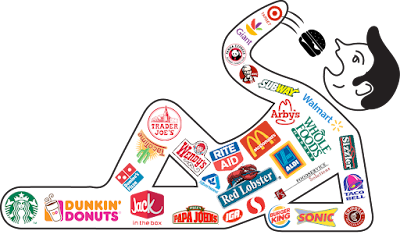Dinner decisions are increasingly dynamic and evolving,
driven by shifting consumer behaviors according to Steven Johnson Grocerant
Guru® at Tacoma, WA based Foodservice Solutions®. Remarkably, by noon, only 25%
of consumers know what's for dinner, and by 4 PM, that figure climbs to just over
50%. This uncertainty presents a significant opportunity for those in the
foodservice industry, particularly as generational preferences continue to
shape dining habits. However, many legacy chain restaurants are struggling to
keep up with these rapid changes, risking the loss of both market share and
profitability.
Recent insights from Circana's
"The Future of Dinner" report reveal that a staggering 81% of evening
meals are sourced from the comfort of home, consumed with family or friends.
This statistic underscores the growing trend of at-home dining, where
convenience and comfort are paramount. Yet, the way different generations
approach dinner is far from uniform, and it’s this divergence that legacy
restaurants must understand—or risk being left behind.
Gen Z: The New Drivers of Dinner
Decisions
Gen Z, the youngest cohort of adult consumers, is
redefining what it means to eat dinner. Unlike previous generations, Gen Zers
are more inclined to invest in special occasion dinners, honing their culinary
skills while also seeking no-prep solutions. This generation values both the
experience of cooking and the convenience of ready-to-eat options. According to
Circana, half of all dinners are ready
in 15 minutes or less, and Gen Z is leading this charge.
This generation's approach to dinner is not just about
speed; it's about indulgence and enjoyment. Gen Zers are more likely to choose
their favorite dishes for dinner or treat themselves to a meal as a reward. As
they begin living independently, they lean on recipes and participate in more
invested dinner occasions, yet they are also the most likely to opt for a
no-cook dinner solution simply because they don’t want to cook.
With Gen Z expected to drive significant growth in
categories like center-of-plate proteins, breakfast foods, and ready-to-eat
snacks through 2026, the future of dinner is clearly in their hands. This shift
is already influencing market trends, with combination dishes, such as rice
bowls, poised for growth as Gen Z and Gen X both seek diverse, flavor-rich meal
options.
Legacy Chains at Risk: A Failure to
Evolve
While Gen Z is propelling the grocerant niche—where grocery
stores offer restaurant-quality, fresh prepared meals—many legacy chain
restaurants are lagging behind. These traditional chains have long relied on a
static menu and service model that no longer aligns with the evolving
preferences of modern consumers. The risk here is twofold: losing relevance
with younger consumers like Gen Z, and failing to meet the convenience demands
of Gen X, who prefer minimal-prep dinners with few ingredients.
Legacy chains are at a crossroads. The failure to innovate
and adapt to these new consumer behaviors could lead to a significant
capitulation in market share. As Gen Z continues to embrace the grocerant niche
for its convenience and quality, and as Gen X turns to more diverse and
flavorful options, traditional chains that do not evolve risk being sidelined.
The Grocerant Niche: A Solution for
the ‘What’s for Dinner?’ Dilemma
For years, the grocerant niche has been quietly
revolutionizing the way consumers approach meal planning, offering a mix of
convenience and culinary satisfaction that resonates across generations. With
81% of evening meals being sourced from home, grocery stores that provide
fresh, ready-to-eat meal components are perfectly positioned to capture the
attention of both Gen Z and Gen X.
The key to success in this niche lies in offering
customization and personalization. Consumers today want the freedom to mix and
match meal components, tailoring their dinner to their specific tastes and
dietary preferences. Grocerants that can provide this level of flexibility are
not only meeting the immediate needs of today’s consumers but are also building
long-term loyalty.
The Road Ahead: Adapting to Stay
Relevant
As Gen Z continues to redefine the dinner landscape, it’s
clear that the grocerant niche will only grow in importance. Legacy chains must
take note and adapt quickly or risk obsolescence. The future of dinner is here,
and it’s being driven by a generation that values both convenience and
experience. Those who fail to evolve will be left behind, while those who
embrace this new reality will thrive.
In this dynamic environment, the grocerant niche is not
just a trend; it's the future of dining. Whether it's a quick meal solution for
a busy Gen Xer or a special occasion dinner for a Gen Zer, the grocerant niche
offers what consumers want—right now. It’s time for legacy chains to catch up,
or they might just find themselves on the wrong side of the dinner table.
Foodservice Solutions® specializes in
outsourced business development. We can help you identify, quantify and qualify
additional food retail segment opportunities or a new menu product segment and
brand and menu integration strategy. Foodservice Solutions® of Tacoma WA is the global leader in the Grocerant niche
visit us on our social media sites by clicking one of the following links: Facebook, LinkedIn, or Twitter
Are you Evolving?
Are you staying
Relevant?







No comments:
Post a Comment